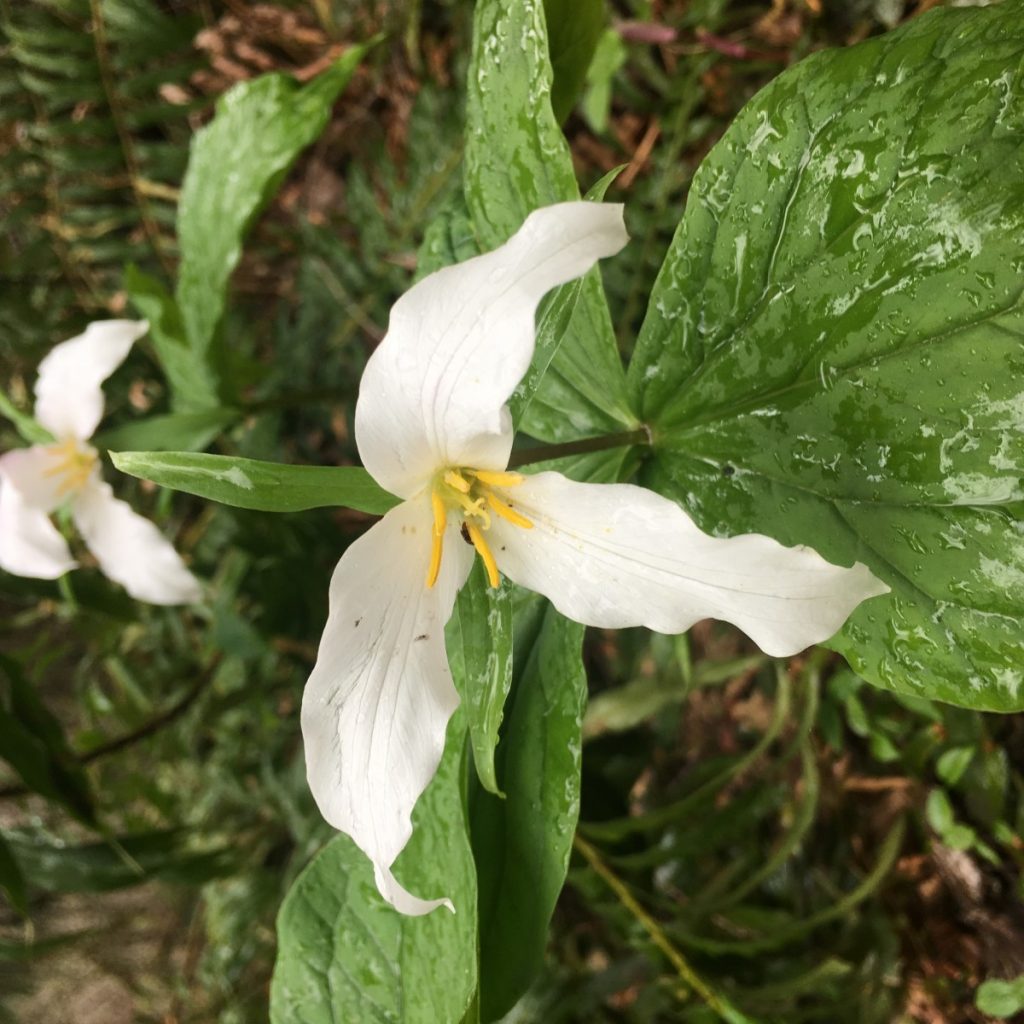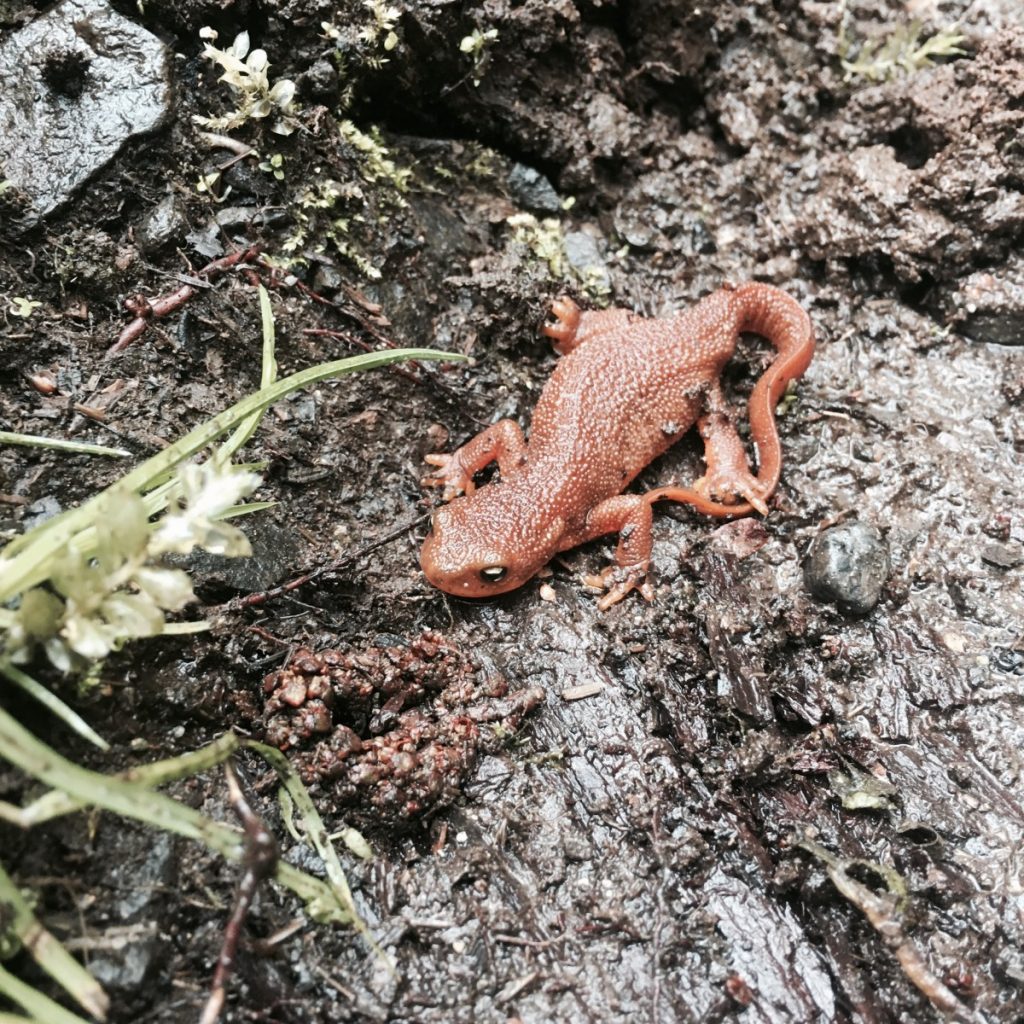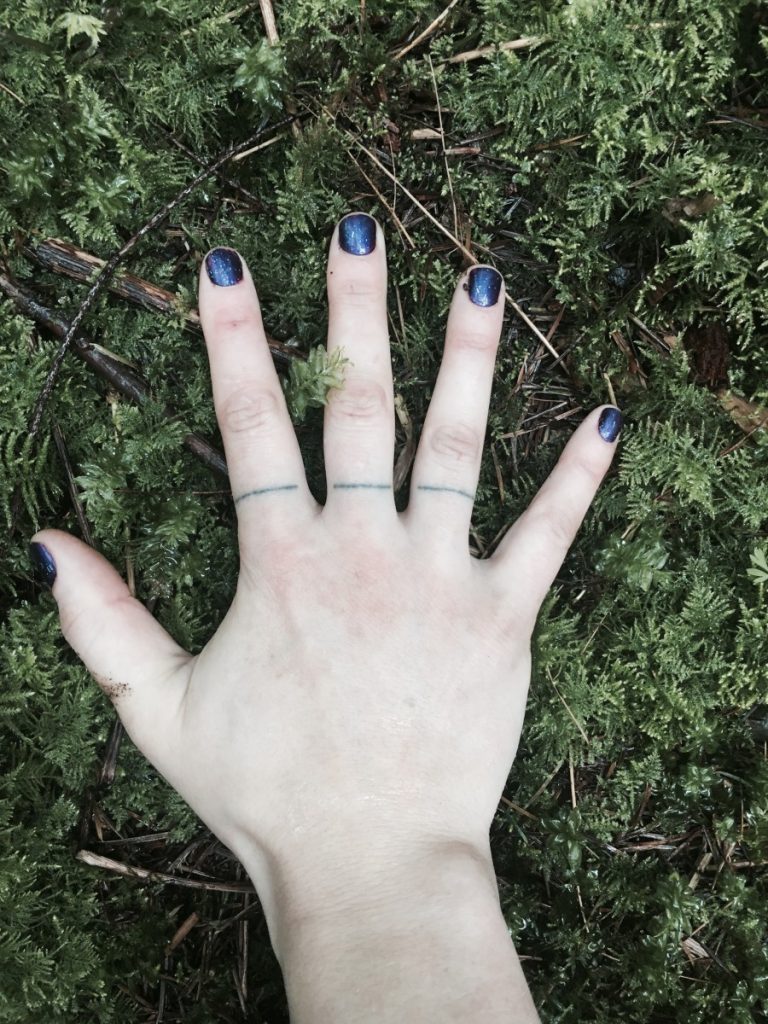Tiny white butterflies flutter alongside me for the entire walk. At times I wonder if somehow the same butterfly had decided to travel with me, but I know they are different butterflies, that the 8 or 9 miles I end up walking could to them be the entire span of territory they might inhabit in their lives. I wonder about the difference in lifespan between the butterflies and myself, and between myself and the trees, the trees and the rocks, the rocks and the sun.
In Dark Ecology, Timothy Morton says, “we live in a reality determined by a one-size-fits-all window of time, a window determined by some humans’ attempts to master their anxieties about sustenance… the logistics of this time window imply that existing is better than any quality of existing. So it’s always better to have billions of people living near to misery than even millions living in a state of permanent ecstasy. Because of this logic, industrial machines were created. The small rigid time tunnel now engulfs a vast amount of Earth’s surface and is directly responsible for much global warming… we live in a world of objectified depression. So do all the other life-forms who didn’t ask to be sucked into the gray concrete time tunnel” (Morton, 112-113). We look ahead only far enough to attempt to assure the survival of the people (and only the people) alive at this very moment, ignoring the many time tunnels that exist around and within us.
This subject of different, expanding and contracting, overlapping spheres of time is proving almost impossible for me to talk about with the language I have available. I can see it when I close my eyes, this beautiful dance of color and light, and I can feel it when I look at the butterfly or into the eyes of a lemur or even a tiger gone insane with captivity. I can see the tiger raging at her entrapment in our time tunnel, I can feel the rage in my own body because this time tunnel we are all trapped in is not the one I was born for either.
The question I come back to every day is: HOW? How can a species trained over generations to agrilogistics and the time tunnel of industrialization come out of it? The very question makes my body ache with exhaustion and despair. Calvin Martin, in In the Spirit of the Earth, says, “I don’t have the language to truly convey the richness of what my still-paleolithic mind senses… I speak the language of the neolithic, the triumphant tongue of man apart, the voice of history” (quoted in Hello My Name is Chellis, 71). Whenever I try to speak of these things, much less come up with an answer, I go tongue-tied and blank, and maybe that’s as it should be. The answer isn’t in our rational minds, as much as we want to go there to find one. The answer is somewhere in our bodies, and in the relationship our bodies have, and have always had, with the species and landscapes with which we live in interdependence. Maybe the answer lies simply in recognizing and living from that interdependence.
So much of this project involves asking questions rather than giving answers. I can’t give answers, because I am only one voice and one body. I can’t have answers, alone.
***
Trillium flowers were blooming all over the forest as I walked on. Traditional names for the trillium flower include Toadshade (the flowers being big enough to shade a toad from the spring rain), Wakeroot (for the appearance of the first spring robins simultaneous with the blooms), and Birthroot (for its medicinal uses during childbirth). Ants are attracted to a fruit the trillium produces. They take them for food and the seeds are left in the ant colony’s trash pile, where they can later germinate. The ants and the robins, the trilliums and the toads, women in childbirth and midwives running to the forest for medicine; such a simple thing this white flower appears but it is part of a whirling dance of relationship, as is everything, whether we want to acknowledge it or not. (1) (2)
Off to the side of the trail is a pond, barely seen through the trees and separate from the part of the forest visited by humans. I hear a loud honk, and see two geese come in for a landing, ungainly bodies becoming graceful as they are embraced by the water, a V of wake settling in behind them. I wonder at their lives, off to the side of humans like that. They are affected by climate change as much, possibly more, than we are; they are vulnerable to hunting and poisoned water, habitat loss and food scarcity. Yet there they are, in their pond, in some kind of parallel existence to ours.
I don’t know what this means, or why this is important. The geese off in their private pond, it feels good to imagine them there, like distant cousins.
***
I get into a darker, quieter part of the forest. I’ve gone off the main trail past the falls and there aren’t anymore human voices or even gunshots, though I step over fresh smelling horse manure. There is an angry squirrel in a tree, who takes offense to my presence in her territory. Her voice carries after me for a long time. I think I hear footsteps behind me, but whenever I turn there is no one there. I don’t feel alone. I feel like there is something behind me, walking in my footprints, keeping tabs. It feels mischievous. I am reminded of stories of Coyote, the Fae, trickster gods and spirits. I believe in those things, but I believe in them the way I believe in the mycelium network under my feet, the molten core at the center of the earth, oxygen traveling through the air to enter my lungs or the existence of far away stars. Something unseen, but sensed. Something unproven, but possible. Or maybe I believe in those things just because it makes more sense to me to say ‘I don’t know’ than ‘I am certain’. Not knowing makes the world a vast, rich playground of possibility and enchantment.
In The third road: Faerie in hypermodernity, Patrick Curry says that “modernity is… founded on a rejection decidedly not of magic, whose emphasis on power, control and manipulation is grist to its own mill, and a great deal of which was absorbed by early modern science, but of animist enchantment, particularly that of a living more-than-human nature; and that is what still haunts its troubled dreams… enchantment is wild, perilous and natural- not supernatural, but ecological in the fullest sense of the world” (470-471). Timothy Morton calls this the arche-lithic, “the timeless time of coexistence and ontological confusion and profusion” (156).
Fairy tales aren’t so much escapism from the real world as an access hatch back into it.
***
Bypassing a muddy part of the trail, I almost step on a tiny red salamander off to the side. He’s sitting next to what I take to be his front door, a hole leading down into the mud. I get down on all fours and look him in the face. He doesn’t move, and I can’t tell if I’m scaring him or not. Or what he’s doing up on the surface like that. I think at these times that it would be nice to have some scientific knowledge of things, but the enchantment of being eye to eye with this small being is enough for me. Do we ever know for sure? If a salamander expert were to tell me he was probably up waiting for a midday meal, could we know that’s what he was actually doing? What are we missing in our scientific certainty?
I am grateful this little salamander has made an appearance into my day. As I stand and keep walking, I know there are millions of unseen creatures all around me. I think of the Wendell Berry poem, To the Unseeable Animal:
My Daughter: “I hope there’s an animalSomewhere that nobody has ever seen.
And I hope nobody ever sees it.”
Being, whose flesh dissolves
at our glance, knower
of the secret sums and measures,
you are always here,
dwelling in the oldest sycamores,
visiting the faithful springs
when they are dark and the foxes
have crept to their edges.
I have come upon pools
in streams, places overgrown
with the woods’ shadow,
where I knew you had rested,
watching the little fish
hang still in the flow;
as I approached they seemed
particles of your clear mind
disappearing among the rocks.
I have waked deep in the woods
in the early morning, sure
that while I slept
your gaze passed over me.
That we do not know you
is your perfection
and our hope. The darkness
keeps us near you. (3)
I’ve taken an accidental side route, and made my hike nine miles instead of the intended six. I don’t mind. I come out of the gloomy, creepy part of the forest and back into a dew-dappled, sun-spotted area near a small glade carpeted in ivy and small blue flowers. The trees are smaller, and younger. There is an atmosphere of gaiety. If the Fae are truly present here in this forest, than I’ve left the province of the goblin king and entered that of the fairy sprites, wearing tiny flower crowns and riding on ladybugs. I settle myself into the carpet of ivy underneath a small fir tree whose branches brush the top of my head and set my alarm for twenty minutes of meditation. I feel the cushion of living plants beneath me, feel my palms on the rough denim surface of my knees, smell the not-quite-summer air and listen to birds and squirrels rustling and chirping all around. My attention wanders from the present to faraway places in my mind, and back, and out, and back, like the tides, and I let the thoughts come and go. For awhile, I am not anywhere at all, but just a body sitting and breathing with the forest, consciousness gone black and peaceful. The alarm chimes and I slowly open my eyes, looking around at a world turned a slightly different shade or tenor with my slightly altered perception. I feel more here. I feel like the ivy glade has entered into my borders just a little bit more than it was before, like I breathed it in farther than I knew possible. Like my edges are a little more porous than before I sat still awhile.
I gather my things and walk back to the trail, stopping to look back. The glade is in me but looking at the spot where I was sitting I know I’ve entered the edges of the glade just as much. Some energetic echo of myself still rests there, under the pine tree.
Word doc: SomaticExploration2Part2
- http://nativeplantherald.prairienursery.com/2015/02/ten-things-to-know-about-trilliums/
2. http://www.thereflector.com/home_scene/article_63bd0a44-a093-11e2-b9dc-001a4bcf887a.html
3. http://soulofthegarden.com/poem1.html




Leave a Reply